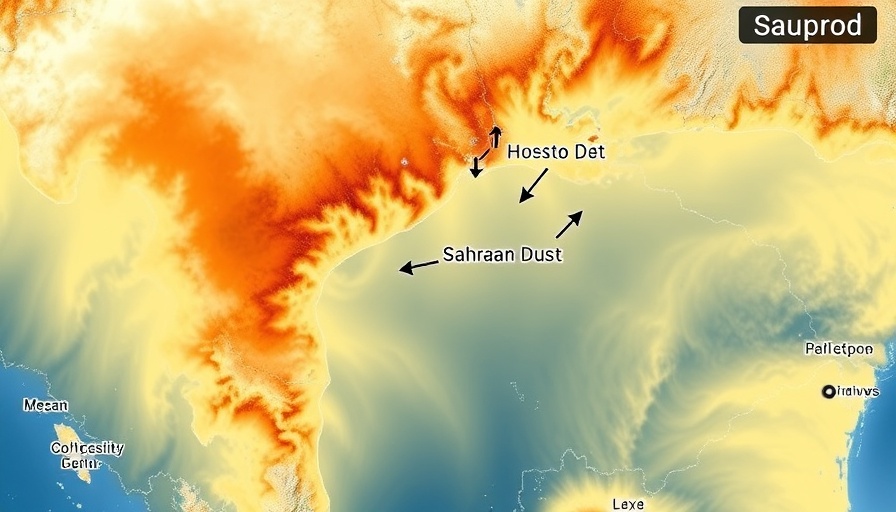
Unpacking the Saharan Dust: What It Means for Texas
This week, residents across Texas are bracing for the arrival of Saharan dust, which is set to sweep through the state on Thursday. Known for altering weather patterns and impacting air quality, this phenomenon is both intriguing and a cause for concern. As summer approaches, understanding the role of Saharan dust becomes increasingly vital for Texans. This dust, which travels across the Atlantic Ocean from the Sahara Desert in Africa, is not just a meteorological curiosity; it carries implications for health, weather, and ecosystems.
The Journey and Impact of Saharan Dust
The journey of Saharan dust is a captivating natural event. Each year, plumes of dust rise from the Sahara Desert and are carried thousands of miles by wind currents. As the dust engages with the Atlantic atmosphere, it can affect the formation of storms and even influence hurricane development. Interestingly, studies have shown that the dust can inhibit hurricane formation due to its dry air and particles that disrupt the moisture necessary for storms to thrive.
However, the impact of this dust is felt far beyond its effects on hurricanes. Texas residents will likely notice a hazy sky and a change in air quality, which can exacerbate respiratory issues or allergies for some individuals. For those already suffering from asthma or other lung-related concerns, the dust poses a tangible risk as it can carry harmful microorganisms and pollutants.
Weather Conditions to Expect
As the Saharan dust makes its presence known, here’s what residents of Houston and surrounding areas can expect in terms of weather. Temperatures are predicted to be hotter than normal, combining with the dust's arrival, leading to a uniquely stifling atmosphere. Moreover, while most rain will be pushed away by the dry air from the dust, the combination of heat and humidity may still result in isolated thunderstorms.
It is essential to monitor local weather updates, particularly during the transition days of dust occurrence. Houston, with its vibrant community and outdoor lifestyle, is gearing up for changes. The city's many parks and leisure spots may see fewer visitors, as those wary of air quality opt for indoor activities until conditions improve.
Health Considerations and Tips
For many Texans, the arrival of Saharan dust marks a shift that calls for a few precautionary measures. Hydration becomes crucial, as the hot and dusty air can lead to dehydration. Residents are advised to stay indoors during peak dust hours, particularly older adults and children, who may be more sensitive to air quality changes.
It might also be a good idea to use air purifiers at home, especially if you live in urban areas where air quality may be compromised. Wearing masks while outdoors and keeping windows closed can limit dust intake and protect against potential respiratory complications.
Community Weather Preparedness
As news of Saharan dust spreads, it's heartening to see Houston’s community spirit. Local organizations and health authorities are mobilizing to provide information and support. Residents are encouraged to stay informed and share updates with their neighbors through community platforms and social media.
This serves as a reminder of the resilience that defines Texas communities—coming together during unexpected weather events to share resources and knowledge. As we navigate this Saharan dust episode, let’s prioritize our health and well-being while staying connected.
Conclusion: Embrace the Dust with Care
The Saharan dust, while it may not be a welcomed guest, is certainly a part of our Texas story. Embracing this natural phenomenon while prioritizing our health can ensure we remain strong and united as a community. Keep your loved ones informed, stay safe, and don’t hesitate to reach out for help or advice during this hazy time. By sharing experiences, we can strengthen our community bonds through even the dustiest days.
 Add Row
Add Row  Add
Add 




 Add Row
Add Row  Add
Add 


Write A Comment